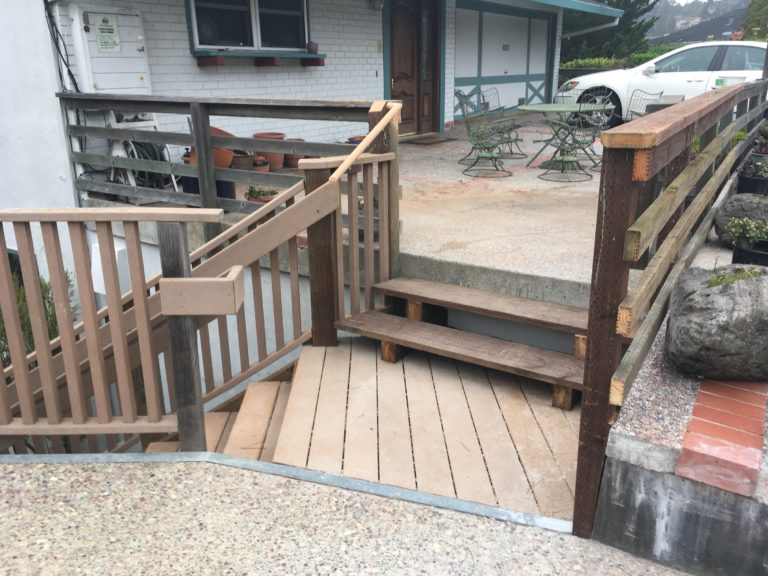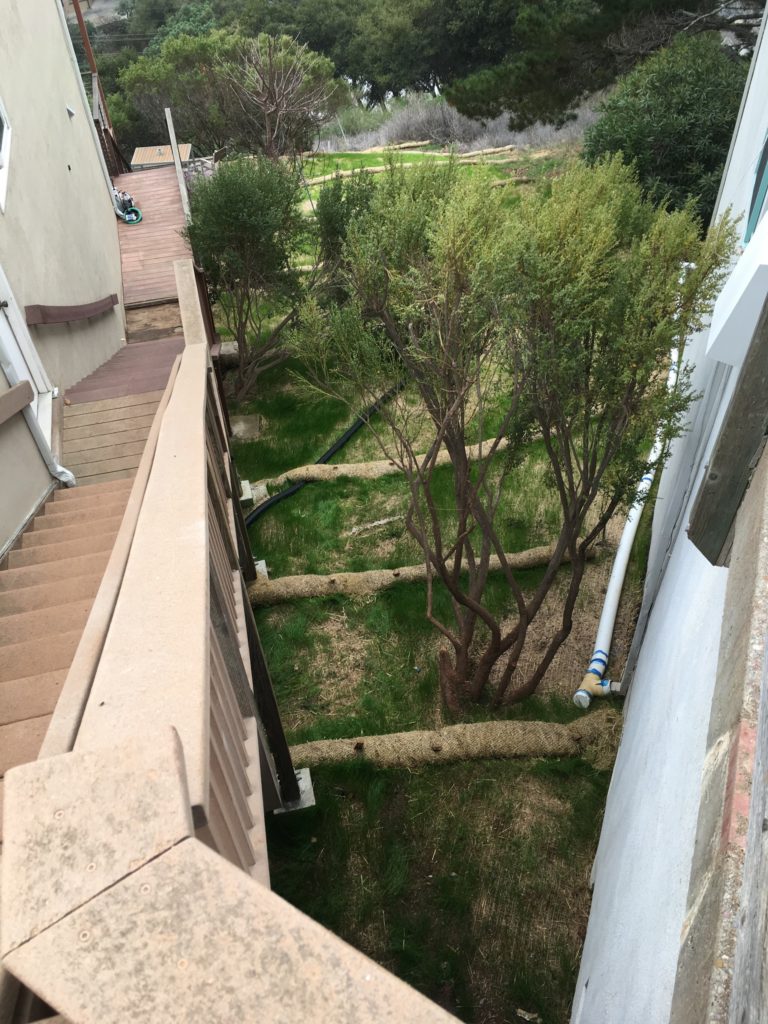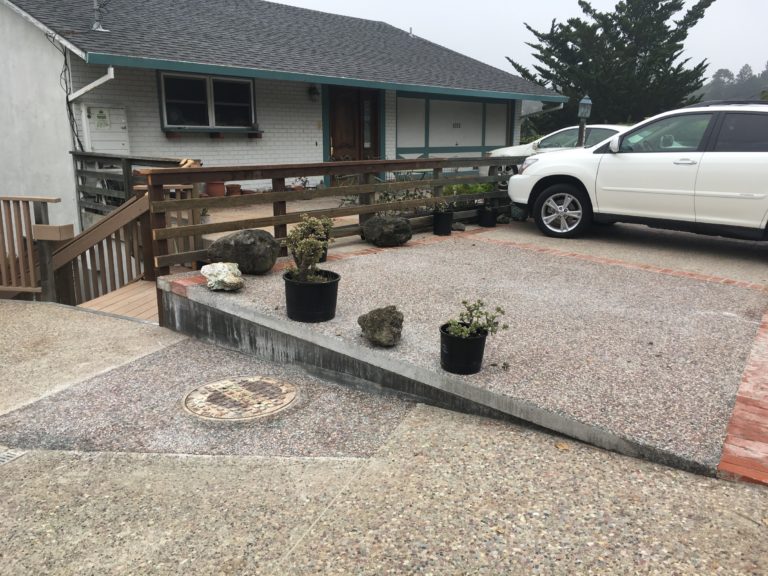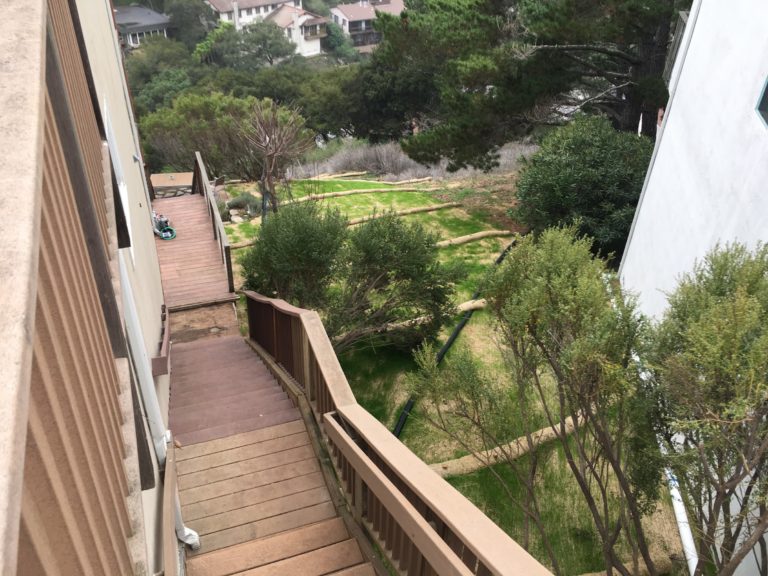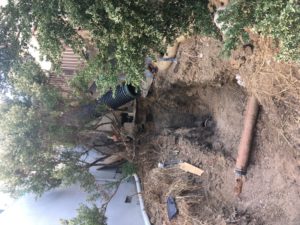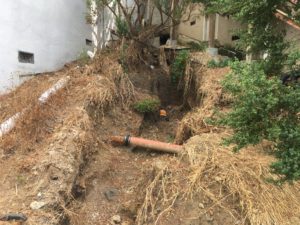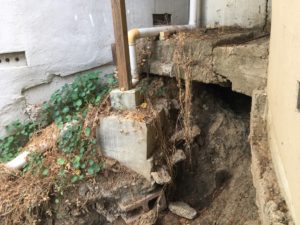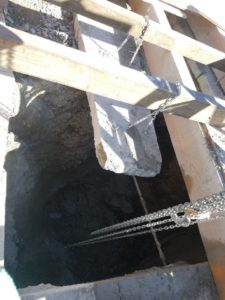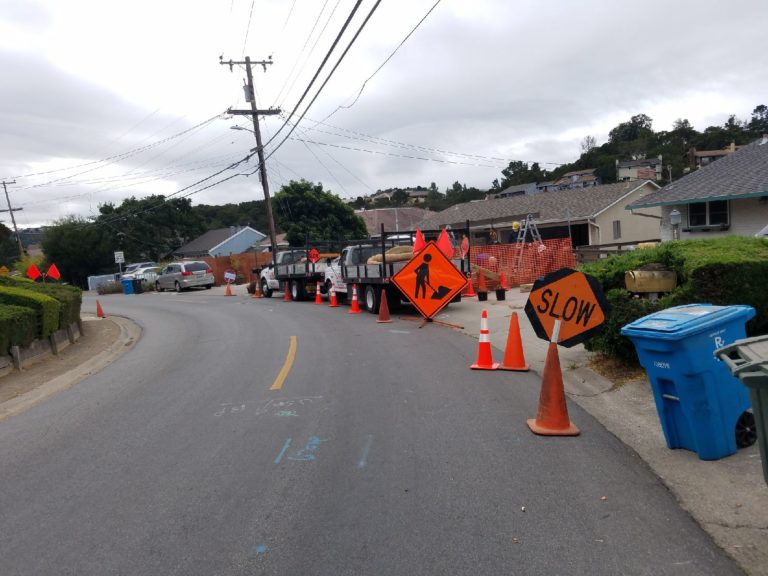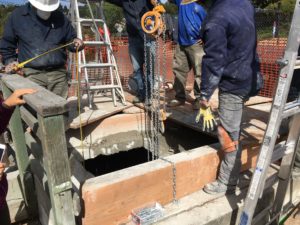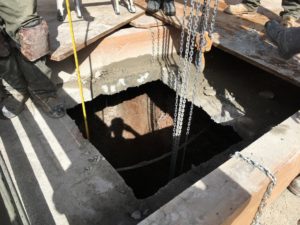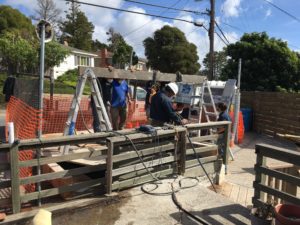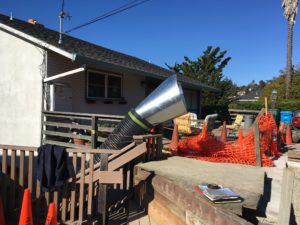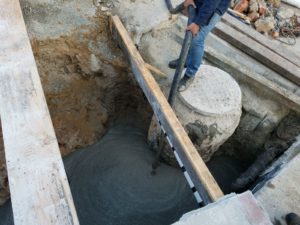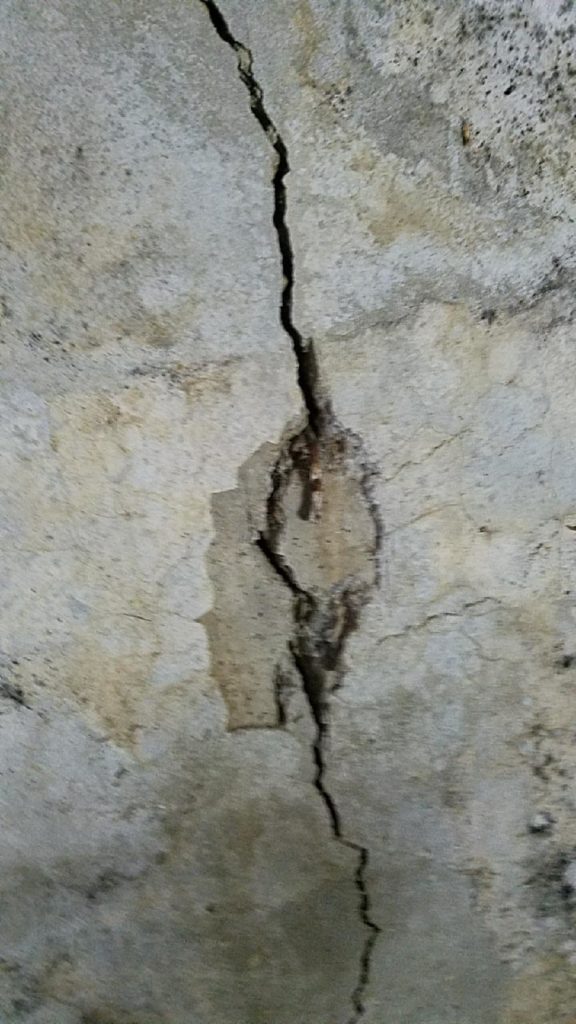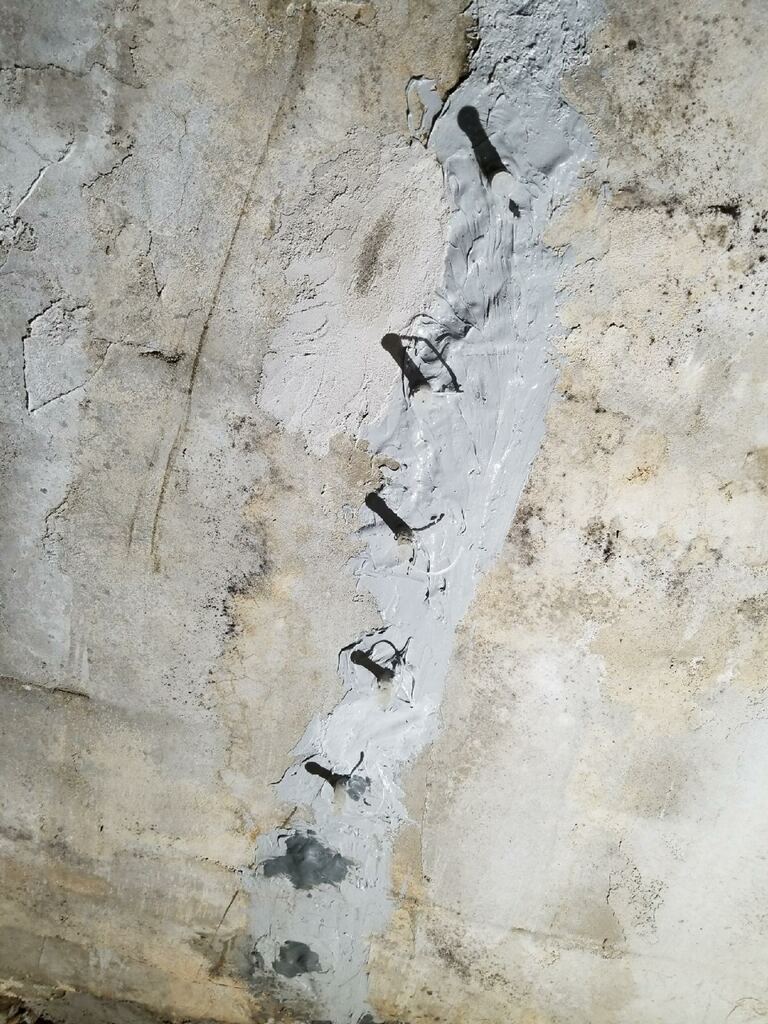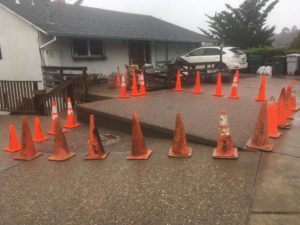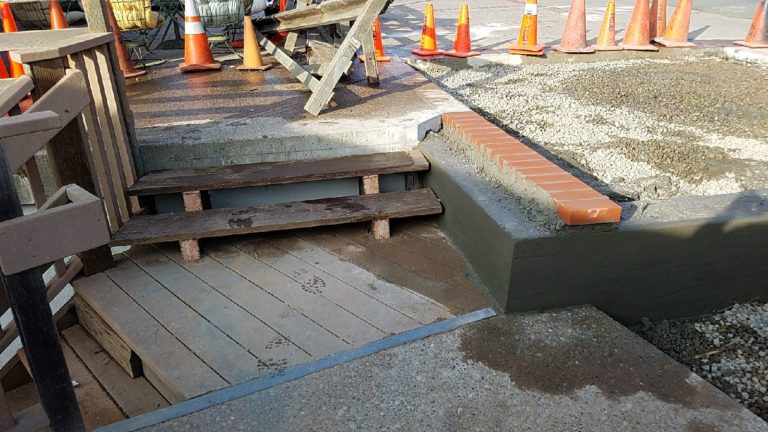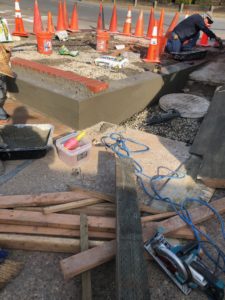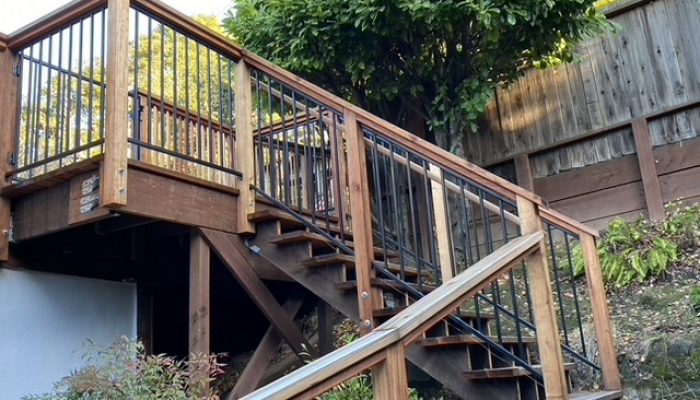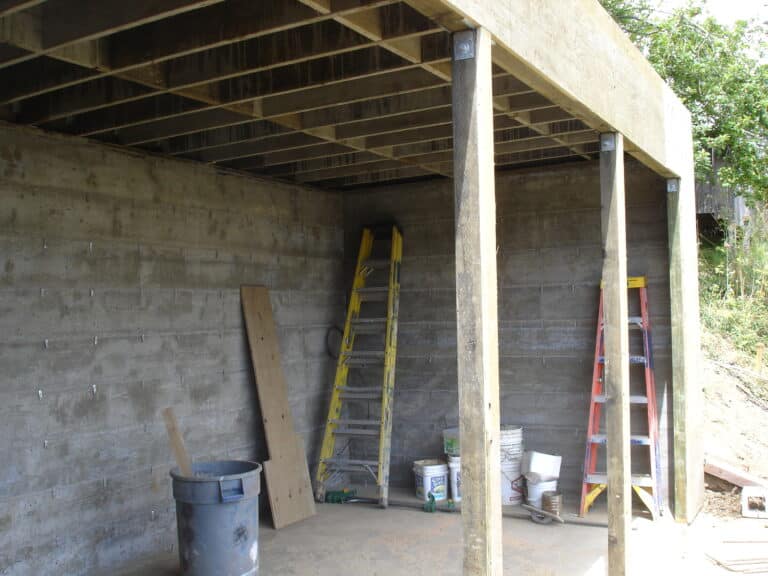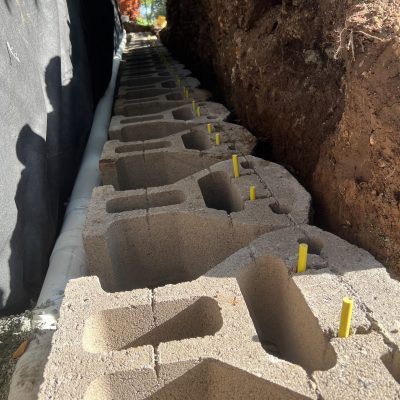Finished Site Condition:
On June2, 2017 a water main break/failure occurred in Belmont that created a, 2 hour long, river of water that undermined a 25 cubic yard void under two neighbors concrete driveway slabs, carved a football filed length “rill” (mini-canyon) approximately 6’ wide and about 5’ deep through the those neighbor’s back yards and deposited 90 cubic yards of soil and mud (a mud slide) onto the street and into a neighbor’s house below. In addition, a sizable crack occurred in one neighbor’s concrete retaining wall, apparently from the buildup of water behind it. This event created a great deal of damage, a very big mess and left a situation that was precarious at best, and dangerous at worst.
HTCI was tasked to evaluate and bid on this project. HTCI suggested bringing in a Geo Technical Civil/Engineer to help with the final design, repair and restoration of the void under concrete driveway slabs, and the “rill”down the two back yards. This was acted upon, and Dan Dyckman of GeoForensics Inc, was hired. Dan would be hired to design the repair, and act as “special inspector” to perform inspections and provide oversight, start to finish, along with the Belmont Building Department, Belmont Public Works and Mid-Peninsula Water District.
This “event” involved two neighbors from Monserat Avenue down to San Juan Boulevard. HTCI worked with the upper tow neighbors on Monserat Ave., where the water main break occurred, whereas the lower neighbor hired another general contractor. Dan Dyckman’s concept was completed, the project was bid on, and then the permitting process was begun. As the city considered the situation fairly critical to complete, (several months had gone by, and adverse weather was approaching), the “process” was expedited and permits were issued.
HTCI’s goal was to try to complete the repairs before severe weather arrived, which, in the end, was accomplished. The construction had 3 phases. First was to fill the 25 cubic yard void under the driveway slabs of concrete in front; second was to fill and rebuild the hillside and third, was to repair the 8’ high crack in one of the neighbor’s concrete retaining walls. The areas needing to be worked on were both precarious and steep, so after careful evaluation and safety considerations, and having to complete all work without the help and efficiency of mechanized equipment: (mainly excavators and “Bob Cat” type of earth moving machines), a production plan was formulated. At the time HTCI began the first part of their work on the slabs, it was not known what the potential of breaking the water main, again, was. It was decided to cut the slabs into 2’X3’ pieces and carefully chain hoist/lift those sections out, one by one, so as to not risk any concrete falling onto the remaining pipe and water main valve causing another break. About 24 of these 400 pound sections were sawed out and extracted. This now opened up the “void”. The void had to be filled with a mixture of pure Portland cement and sand, called CDF (Controlled Density Fill). This would have mostly the same properties as the soil that had been eroded away, by the effect of the tremendous water pressure. A special drain system was installed, existing pipes were protected and then the C.D.F was poured into the void. Since there was concern about the many tons of pressure that the liquid material would create against the walls, it was poured at two separate times (one day apart). Once the CDF was installed into the void, work began on the “rill”. Depending on the various depths in the erosion. Different methods and material were used to repair/fill it. Some areas were so deep that they required a separate sort of underground drain system. So much soil had been eroded away that many cubic yards of local, natural, soil had to be brought in. Luckily, another contractor was excavating a foundation and was happy to deliver his soil to our site for free. This resulted in a savings in the overall budget. All of the soil had to be deposited and compacted into place by hand. Over many weeks this arduous task was completed. The final “finish” on the slope consisted of approximately. 6” of top soil, coco mats stapled to the hillside, straw wattles and rye grass seeding. In only a mater of a few days, and after a bit of hand watering and some rain, a beautiful green carpet, of grass was created. Injected epoxy repaired the cracked foundation wall.
All front exposed aggregate slabs were reinstalled and a new front retaining wall was poured. The project was completed in the budgeted amount, even though there were some unknowns.
In the end, all damage had been addressed and the various areas were returned to as good or better than pre-‘burst’ condition.

